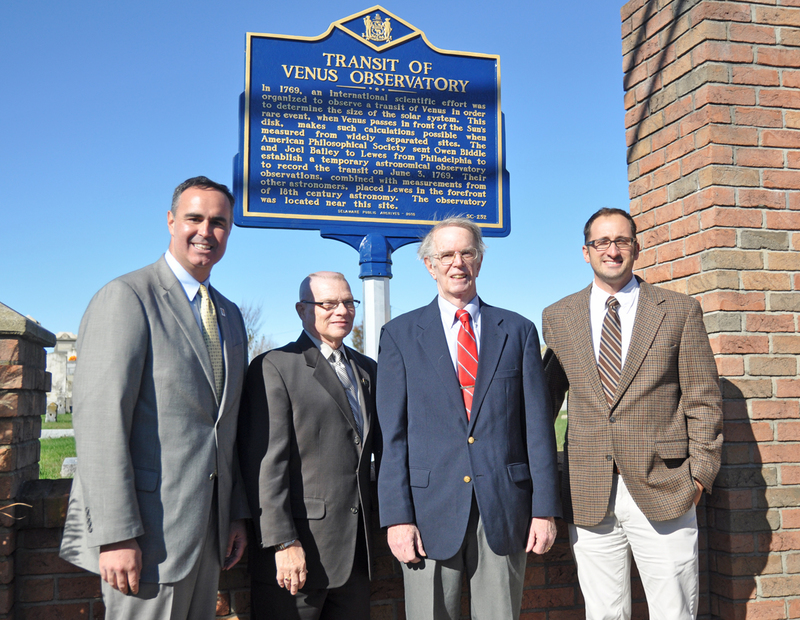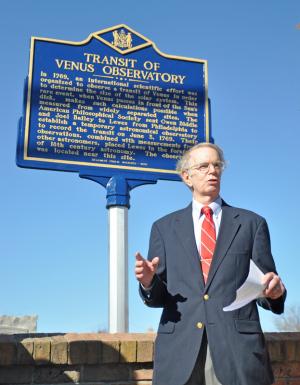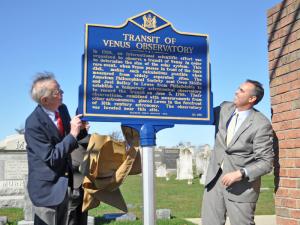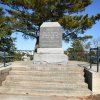Historic marker reveals Lewes' contribution to global astronomy

A new historic marker unveiled at the entrance to Bethel Cemetery on Savannah Road Nov. 20 highlights Lewes' contribution to an 18th century global astronomy project.
In 1769, three surveyors from the American Philosophical Society in Philadelphia traveled to what was then known as Lewestown to monitor the Transit of Venus, when the planet passes in front of the Sun. The rare event occurs eight years apart every 120 years or so. The event last occurred in 2004 and 2012. The next transit is expected in December 2117 and December 2125.
Through research, it was determined the men set up a temporary observatory in what is now the Bethel Cemetery. The purpose of their journey to Lewes was to make scientific calculations as Venus made its journey across the face of the Sun, which could be combined with calculations taken from around the world to determine the distance between Earth and the Sun. By accurately measuring that distance, 18th century astronomers had a means to chart the entire solar system.
Nick Roth is the news editor. He has been with the Cape Gazette since 2012, previously covering town beats in Milton and Lewes. In addition to serving on the editorial board and handling page layout, Nick is responsible for the weekly Delaware History in Photographs feature and enjoys writing stories about the Cape Region’s history. Prior to the Cape Gazette, Nick worked for the Delmarva Media Group, including the Delaware Wave, Delaware Coast Press and Salisbury Daily Times. He also contributed to The News Journal. Originally from Boyertown, Pa., Nick attended Shippensburg University in central Pennsylvania, graduating in 2007 with a bachelor’s degree in journalism. He’s won several MDDC awards during his career for both writing and photography. In his free time, he enjoys golfing, going to the beach with his family and cheering for Philadelphia sports teams.






















































